Executive Burnout Recovery: Proven Strategies to Reclaim Energy and Focus

Executive burnout recovery strategies for high performers to regain energy, focus, and purpose—with myth-busting truths and a proven coaching framework.
Introduction: The Myth → Flip → Stakes
You’ve been told a lie: executive burnout recovery is as simple as unplugging for a week and hitting the gym. Flip it. Recovery for high performers requires structural change, not surface hacks. And the stakes are brutal—ignore this and you won’t just lose momentum; you’ll lose your health, your relationships, and your edge.
I learned this the hard way. In my sales career I carried a huge territory, hit targets, and collected awards—while quietly eroding from the inside. The harder I pushed, the emptier I felt.
Coffee became coping. Sleep felt optional. Presence at home slipped. The breaking point forced a reckoning and redirected my path into burnout recovery coaching. I rebuilt my operating system—then coached other leaders to do the same. This post distills what real executive burnout recovery demands.
Promise: I’ll dismantle the myths, reveal the truths, and give you a step-by-step framework that lets a high performer recover without losing his edge.
Understanding the Core Concept: What Executive Burnout Recovery Really Is
Executive burnout recovery is not a return to the old normal. It’s a rebuild—upgrading the mental, physical, emotional, and spiritual system that drives elite performance. Think of it as reforging steel: heat, pressure, and precision produce a blade that’s stronger than before.
At its core, recovery is the application of mental strength—Control, Commitment, Challenge, and Confidence (the 4 C’s). Practically, that looks like:
Control: Owning energy, calendar, and attention (not surrendering them to inboxes and fire drills), while deliberately protecting recovery blocks and strategic thinking time.
Commitment: Clear goals with tight promises—and the discipline to keep them, supported by routines that reinforce consistency even during pressure and chaos.
Challenge: A growth mindset that treats setbacks as training data, constantly reframing obstacles as lessons to adapt, strengthen, and expand personal leadership capacity.
Confidence: Trusting your abilities and standing your ground under pressure, while projecting calm authority that inspires trust and resilience in those you lead.
Layered on top are recovery rhythms (sleep, breath, movement), values alignment (why you do what you do), and leadership behaviors (focus, boundaries, communication). When these align, executive burnout gives way to executive clarity.
Executive burnout recovery isn’t about stepping back—it’s about stepping into a stronger design.
Why This Matters for High Performers
High performers often frame burnout as a private weakness. In reality, unaddressed burnout is a system failure that tanks decision quality, creativity, and leadership presence. Here’s the cost of skipping executive burnout recovery:
Cognitive drag: Brain fog, impulsive calls, and risk myopia, undermining decision-making precision and eroding the clarity required for sustainable executive leadership.
Relational erosion: Distance from your team and family; low empathy; quick temper, leading to fractured trust, disengaged employees, and personal isolation that compounds exhaustion.
Health fallout: Sleep debt, inflammation, weight gain, decreased HRV—your body shows the bill, manifesting in fatigue, chronic illness, and reduced resilience against inevitable executive stressors.
Lost legacy: A career that looks impressive on LinkedIn but feels empty in your chest, draining fulfillment, erasing purpose, and leaving behind regret instead of a meaningful, lasting impact.
When I rebuilt my operating system—moving from reaction to rhythm, from chasing to choosing—performance improved. Clients noticed. Family felt it. That’s the paradox: the fastest way to go further is to recover first.
You don’t lose your edge by recovering; you sharpen it.
Myth vs Truth: The Executive Burnout Recovery Table
| Myth | Truth |
|---|---|
| “Time off fixes it.” | Time off without redesign returns you to the same trap. |
| “Only weak leaders burn out.” | High performer burnout hits the most driven; intensity without recovery breaks systems. |
| “Slow down to recover.” | Recover to speed up—through alignment, not avoidance. |
| “Success requires sacrifice.” | Sustainable success requires integration and resilience. |
| “Coaching is a luxury.” | Burnout recovery coaching is the fastest, safest route to durable change. |
| “It’s just stress management.” | It’s a full-stack rebuild: biology, beliefs, behavior, and boundaries. |
Myths soothe egos; truths save careers.
Common Challenges & Limiting Beliefs (and the Warrior Reframes)
1.) “I can grind through it.”
- Reframe: Grit without strategy equals damage. Keep the grit; change the plan, but add intentional rest and tactical reflection to sustain elite performance.
2.) “If I pause, I’ll fall behind.”
- Reframe: Pause is not retreat—it’s reload. Recovery compounds output, enhancing creativity, precision, and resilience to compete longer without collapsing.
3.) “This is just the price of leadership.”
- Reframe: The real price is losing your health, marriage, and mission. Choose investment over cost, because sustainable leadership is built on disciplined recovery.
4.) “I don’t have time.”
- Reframe: Burnout steals more time through errors, illness, and attrition than recovery ever will, creating larger setbacks and derailing entire projects unnecessarily.
5.) “I’ve tried apps and tips.”
- Reframe: Tips treat symptoms. Executive burnout recovery rebuilds the operating system, forging resilience through holistic strategies rather than superficial quick fixes only.
Excuses are elegant cages—break them or they’ll break you.
Step-by-Step Implementation Guide (The Warrior Recovery Model)
This is the playbook I use with leaders in burnout recovery coaching. Apply one step per week; layer, don’t stack.
1) Energy & Attention Audit (Week 1)
- Track 7 days of energy: sleep, caffeine, training, meeting load, evening screen time.
- Identify energy leaks (late-night Slack, context-switching, back-to-back meetings).
- Exercise: Rate each day’s recovery (1–10) and note what drove it.
Executive burnout recovery begins when you measure what matters.
2) Reset the Bookends (Weeks 2–3)
- Morning anchor (20–40 min): breathwork, journaling, movement, sunlight exposure.
- Evening anchor (20–30 min): shutdown ritual, analog wind-down, device curfew (90 minutes pre-sleep).
- Boundary: No decisions after 9pm. Protect deep sleep like revenue.
These anchors stabilize your nervous system and restore cognitive horsepower.
3) Realign with Values & Vision (Week 4)
- Define top 5 values; map them onto your calendar.
- Translate values into non‑negotiables (training, family dinners, deep-work blocks).
- Create a 90‑day Wins Map (3 outcomes, 3 metrics, 3 behaviors).
Achievement without alignment fuels high performer burnout. Alignment puts meaning back in the grind.
4) Rebuild Mental Strength (Weeks 5–6)
- Control: Calendar by design (theme days, time blocks, no-meeting AMs).
- Commitment: Two daily promises you always keep (e.g., training + shutdown ritual).
- Challenge: Weekly debrief—what did stress teach you?
- Confidence: Self-talk protocol: Spot → Stop → Swap (replace the spiral with a chosen statement).
5) Lead with Boundaries & Systems (Weeks 7–8)
- Install Focus Protocols: single-task sprints, inbox windows, notification triage.
- Upgrade meetings: clear agenda, decision owner, 25/50-minute caps.
- Delegate or delete low-value tasks; automate status updates.
6) Build Relapse Prevention (Ongoing)
- Monthly Reset Day to clean the calendar, recommit rituals, and realign goals.
- Stress Early Warning System: track 3 signals (sleep quality, irritability, training consistency). If 2/3 slip, trigger a 72-hour micro‑reset.
Systems carry you when motivation can’t.
Real-Life Success Stories
Story 1 (Sales to Coach): My executive burnout recovery started when outward success no longer matched inner truth. I rebuilt around anchors, values, and boundaries. Energy returned, clarity sharpened, and my leadership changed—from force to presence. That shift birthed my coaching career and the frameworks you’re reading now.
Story 2 (CEO, 250‑person firm): He arrived in classic high performer burnout: 80‑hour weeks, midnight emails, short fuse. We executed the six steps, with special focus on sleep, calendar design, and leadership boundaries. In 12 weeks, HRV rose, sleep stabilized, and his team described him as “calmly intense.” Revenue climbed—not despite recovery, but because of it.
One-liner: When the leader recovers, the culture breathes.
Mistakes to Avoid
1/) Chasing hacks instead of systems. Hacks fade; systems persist, leaving executives vulnerable unless they commit to structured frameworks, accountability, and sustainable recovery models.
2.) Assuming a vacation is a cure. It’s a break, not a rebuild, offering temporary relief without addressing the deeper systems, values, and leadership practices required for transformation.
3.) Going solo. Accountability accelerates; isolation delays, making executive burnout recovery slower, riskier, and less effective when leaders refuse support, guidance, and coaching intervention.
4.) Treating recovery as optional. It’s the foundation of sustainable excellence, ensuring long-term performance stability, clarity, and resilience that prevent collapse from chronic stress patterns.
5.) Ignoring body signals. Your physiology is data—heed it, because chronic neglect compounds into illness, burnout relapse, and compromised leadership presence across professional and personal domains.
Treat recovery like a line item, not a luxury.
Advanced Strategies for Mastery
Cyclical Training: Align heavy cognitive work with peak energy windows; schedule strategic recovery like you schedule board meetings, ensuring longevity and consistency of high-level leadership performance.
Deep Work Architecture: 90–120 minute mono‑task blocks; hard edges around them, protecting focus, preventing distractions, and maximizing creative output during critical executive responsibilities.
Breath & State Shifts: 4:7:8 for down‑regulation; 6 breaths/min for balance; nasal-only zone‑2 training, strengthening emotional regulation, stress resilience, and physiological recovery under intense pressure.
Identity Work: Shift from “heroic grinder” to “conscious warrior” who values precision over chaos, cultivating grounded authority and inspiring confidence within teams through aligned presence.
Leadership Rituals: Weekly 1:1s focused on outcomes and capacity, not just tasks—prevent executive burnout across the org, reinforcing culture, clarity, accountability, and relational trust for sustainable leadership.
Mastery is recovery, rhythm, and ruthless focus.
Call to Action
If you skimmed this, start again—skimming is what got you here. If it hit a nerve, good. Awakening always stings before it strengthens.
You don’t need another app. You need a rebuild. Executive burnout recovery is the most leveraged move you can make for your performance, relationships, and legacy.
If you’re done running on fumes and ready to operate with precision, presence, and power:
Sharpen your edge—book your Power Strategy Call. We’ll map your next 90 days and start the rebuild that keeps your edge and your life.
Q&A: Executive Burnout Recovery
What is executive burnout recovery?
Executive burnout recovery is a structured rebuild of energy, mindset, and systems so high performers can perform sustainably without relapse, while elevating leadership effectiveness and long-term fulfillment.
How do I know I’m in high performer burnout vs. just tired?
Persistent brain fog, irritability, poor sleep, diminished motivation, and disconnection from purpose for 2+ weeks signal high performer burnout, especially when these symptoms undermine focus, relationships, and overall effectiveness at work.
Can coaching really speed executive burnout recovery?
Yes. Burnout recovery coaching compresses the learning curve with accountability, custom protocols, and relapse prevention—months instead of years, by integrating frameworks that accelerate clarity, discipline, and sustained recovery for high achievers.
How long does recovery take?
Most leaders see meaningful change in 8–12 weeks; full integration typically unfolds across 3–6 months with systems and rituals, with deeper resilience and leadership transformation emerging as habits solidify permanently.
Do I have to work less to recover?
Not necessarily. You must work differently: better boundaries, deeper focus, and deliberate recovery built into the week, ensuring that performance rises sustainably rather than declining through exhaustion and avoidable burnout patterns.
What’s the first step I should take today?
Start a 7‑day Energy & Attention Audit, install a 30‑minute morning anchor, and set a device curfew 90 minutes before bed, reinforcing awareness, boundaries, and a foundation for deeper executive burnout recovery momentum.
How do I prevent relapse after executive burnout recovery?
Use monthly Reset Days, track early‑warning signals, and keep one non‑negotiable daily promise (sleep or training) to anchor the system, while proactively reassessing routines and values alignment every quarter for sustainable results.


